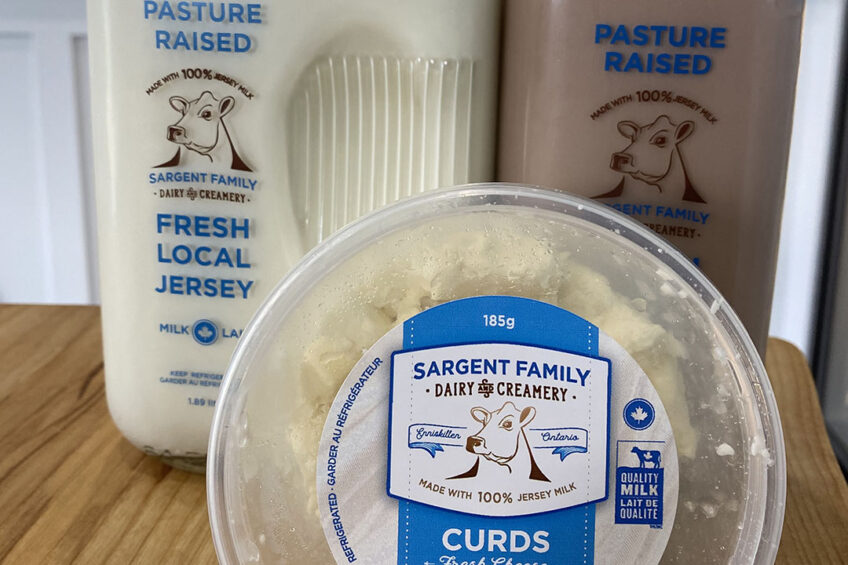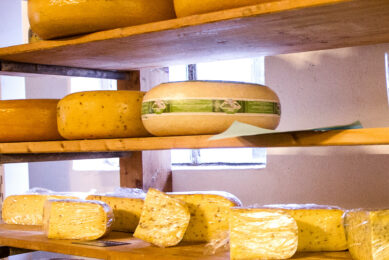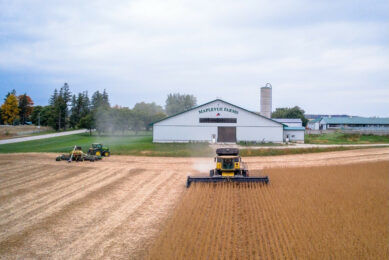Farm report Canada: On-farm milk processing to meet demand

In the last 5 years, 3 more dairy farms in Ontario, Canada have joined a group of 14 other farms where on-farm milk processing occurs. The smallest of these on-farm creameries processes 14,000 L of milk per year, the largest 825,000 L.
The latest of these on-farm Ontario creameries opened in early June 2021, located at Sargent Family Dairy. The farm is also home to a pedigree Jersey herd of worldwide fame and is situated within an hours’ drive of the largest population centre in Canada, the Greater Toronto Area.

Why make products on-farm
Dairy Farmers of Ontario reports several reasons why Ontario producers want to process their own milk. Some of these farmers were already involved in milk processing in years past when they lived in Europe and want to continue with it. For those farmers and others without any experience, making on-farm products is also a good way to scale up their farm business at a time when demand for locally-made food products is very strong in Canada.
For the Sargent family, a unique mixture of reasons apply. Owners Tim and Sharyn Sargent are third generation Irish immigrants who both grew up on dairy farms. In recent years, talking with their children, they wanted to find a farm business expansion solution that would allow 4 of the 5 who were interested in deriving income from the family farm to do so.
Daniel, Benjamin and Melyssa were already helping to run the farm, and Bruce, who has his own marketing firm, was also interested in being on board (Stephynie is an optometrist and a keen supporter of the farm).
Profile
Sargent Family Dairy is based in southern Ontario, Canada, near the city of Bowanville. It is home to the famous Enniskillen Jerseys herd, that was owned by Frank Stenger, who died in 2020 and was inducted into the Canadian Agricultural Hall of Fame. Sargent Family Dairy Owners Tim and Sharyn run the farm business with the help of their children Daniel, Melyssa, Bruce and Benjamin and they now have an on-farm processing plant. They have about 150 purebred Jerseys in the herd, 60 in the milking herd. They own 220 acres and rent an additional 100 acres.

“There are traditional ideas of expansion, more cows, more land, but cash cropping is so volatile and it’s not our strength,” notes Bruce Sargent. “Making our own dairy products checked all the boxes. It’s a new revenue stream that will support us and support farm business growth. It also made good sense for us in that I have a strong marketing background and we are situated in a region with phenomenal interest in local products. In addition, Melyssa had interest in learning how to make cheese and operate the creamery.”
The family made the final decision in early 2019, and by June 2021, the creamery was built, equipped, and operating.
Sales booming
Currently, the creamery processes a few thousand litres of milk a week. The Sargents sell whole milk, whole chocolate milk, and cheese curds at their new on-farm store and through 2 independent stores so far (although that number is expected to increase). A 1-litre bottle of whole milk costs $3.50 CAD (US$ 2.82) and whole chocolate milk costs a little more.
“We sold out of everything quickly in the first week and the second and third have been similar,” says Sargent. “It’s going very well. We’ve had a lot of media coverage and we have radio ads ready for later on. We want to be sure we can handle customer numbers at the farm store while we continue to meet Covid-19 restrictions.”
Another marketing avenue was opened when Sargent Family Dairy recently joined Durham Farm Fresh. This local food product marketing non-profit group started almost 30 years ago and has about 75 members.

Sargent says the cost of the creamery was similar to that of a new barn. When the additional revenue of selling their own dairy products is at the right stage, he and his family plan to build a new barn and increase their milking herd (purchase new quota under Canada’s supply management system).
There’s a strong connotation to old-fashioned milk with the Jersey.
Attraction of Jersey milk
In marketing the Sargent Family Dairy products the uniqueness of their Jersey herd plays a strong role. “There’s a strong connotation to old-fashioned milk with the Jersey,” says Sargent. “The milk also has a much higher fat content than you see with other breeds, so it’s smoother and richer, which people love.”
Butter and camembert cheese will also be added to the product roster by Melyssa over time. “The butter has a dark colour and really good flavour,” says Sargent. “Melyssa has made several test batches and the results have been excellent. We also want to make camembert cheese. People are ready to knock down the door to buy Jersey butter. One silver lining of Covid is a huge interest in cooking and baking, using local products where possible.”
14 other Canadian Jersey farms offer their own products, the vast majority located in Quebec.
And whilst there are about 1100 Jersey herds in Canada, with about 426 in Ontario, the Sargent’s herd is the famous Enniskillen Jerseys, from which embryos and live animals have been exported worldwide.

Elite genetics
Enniskillen Jerseys were created in 1939 in Canada by the Stengers, a family of German heritage. Frank Stenger, who died in 2020, was inducted into the Canadian Agricultural Hall of Fame for his accomplishments, which – beyond continued genetic development of his famous herd – included judging cattle and exporting Canadian Jerseys in many different countries.
Since 1960, Enniskillen has produced 430 Very Good cows, 200 Excellent cows, and 66 Super Excellent cows, as recognised by Jersey Canada.
Eventually, Frank began to seek a passionate younger person who could eventually take the reigns at Enniskillen, and approached Tim and Sharyn Sargent. They developed a partnership, and the mentoring began. It was a great fit. Tim has continued to develop the Enniskillen breeding lines and has based his milking herd on top producers. Tim has also served as president of Jersey Canada in 2017 and 2018.
In terms of farm business income before the creamery, 75% came from milk production and about 25% from genetics sales (cows, bulls, semen).
The cows receive a ration consisting mostly of the farm’s corn silage and baleage, barley and a mineral supplement and a protein pellet. About 25 kg of milk is produced per cow per day at 5% butterfat and 3.8% protein, on average. The milking is done in a tie-stall set-up.
Heifers are pastured during the spring to fall and are housed in a barn during the harsh Ontario winter. Sargent notes that having pastureland helps the farm sequester carbon and provides sustainable feed for the heifers, but there are also other sustainability factors at work on the farm. Jerseys are smaller cows and therefore consume less feed and water, says Sargent. They also require smaller barns and produce 50% less phosphorus in their manure compared to other dairy breeds.
Someday, the Sargent family would like to use all their milk in their creamery, but for now, most of it will continue being sold to large, conventional processors within the quota system.
Farm report, Canada: Leaving the supply management system
Milk processing on the farm is not so common in Canada as dairy farmers there have relied on the trusted supply management system to market their milk. However, that system has been heavily tested in recent years. Find out more…
Join 13,000+ subscribers
Subscribe to our newsletter to stay updated about all the need-to-know content in the dairy sector, two times a week.













